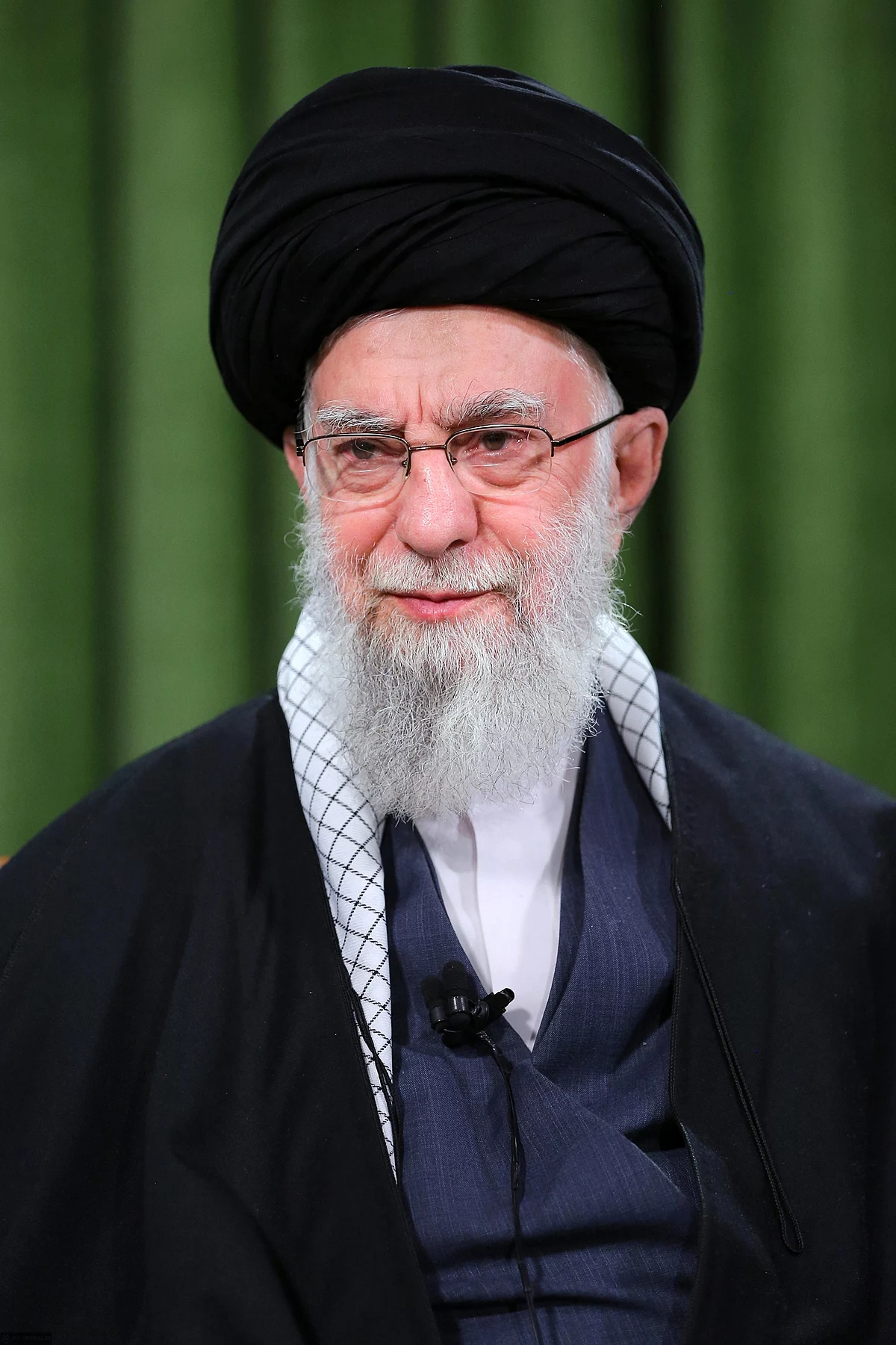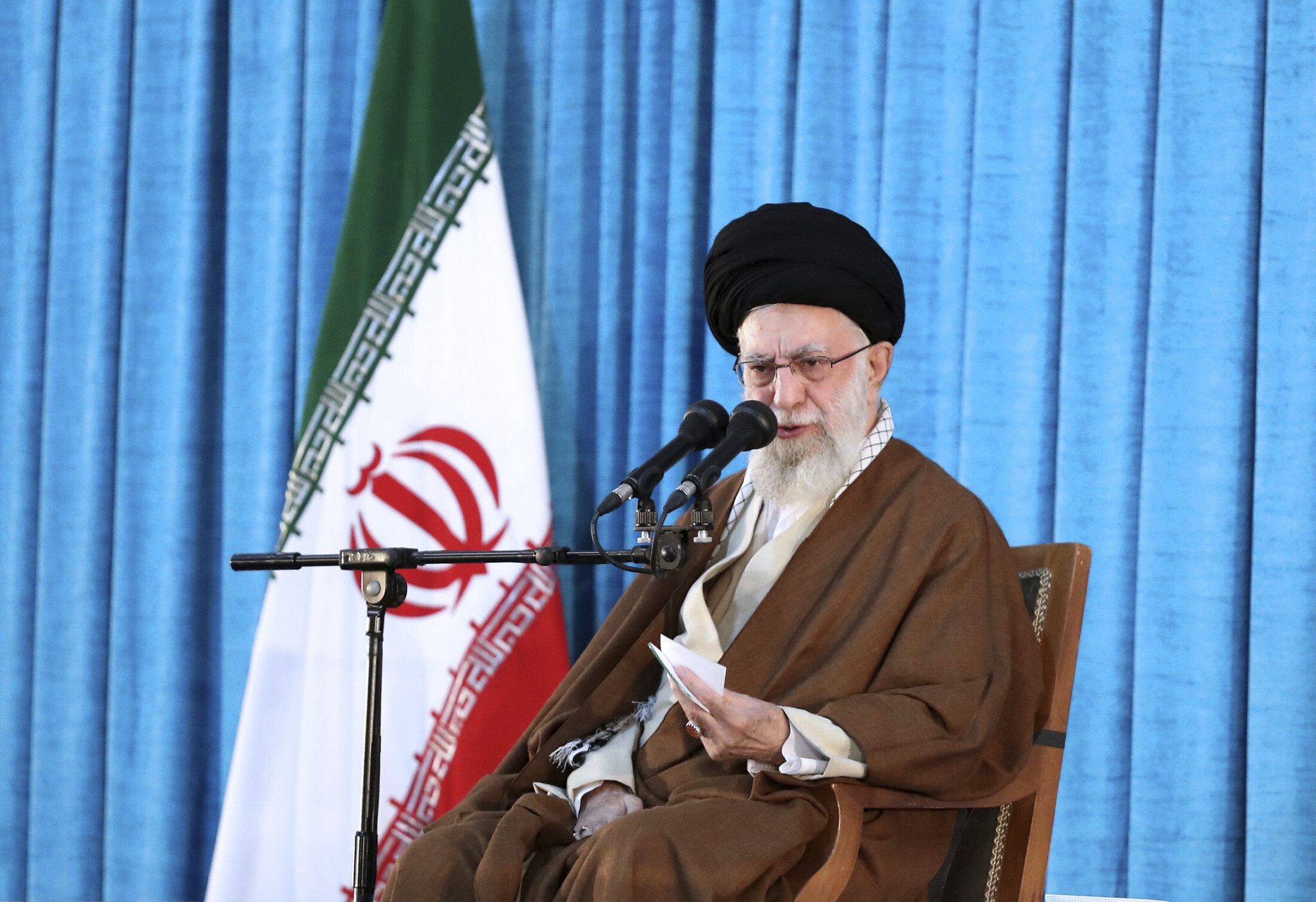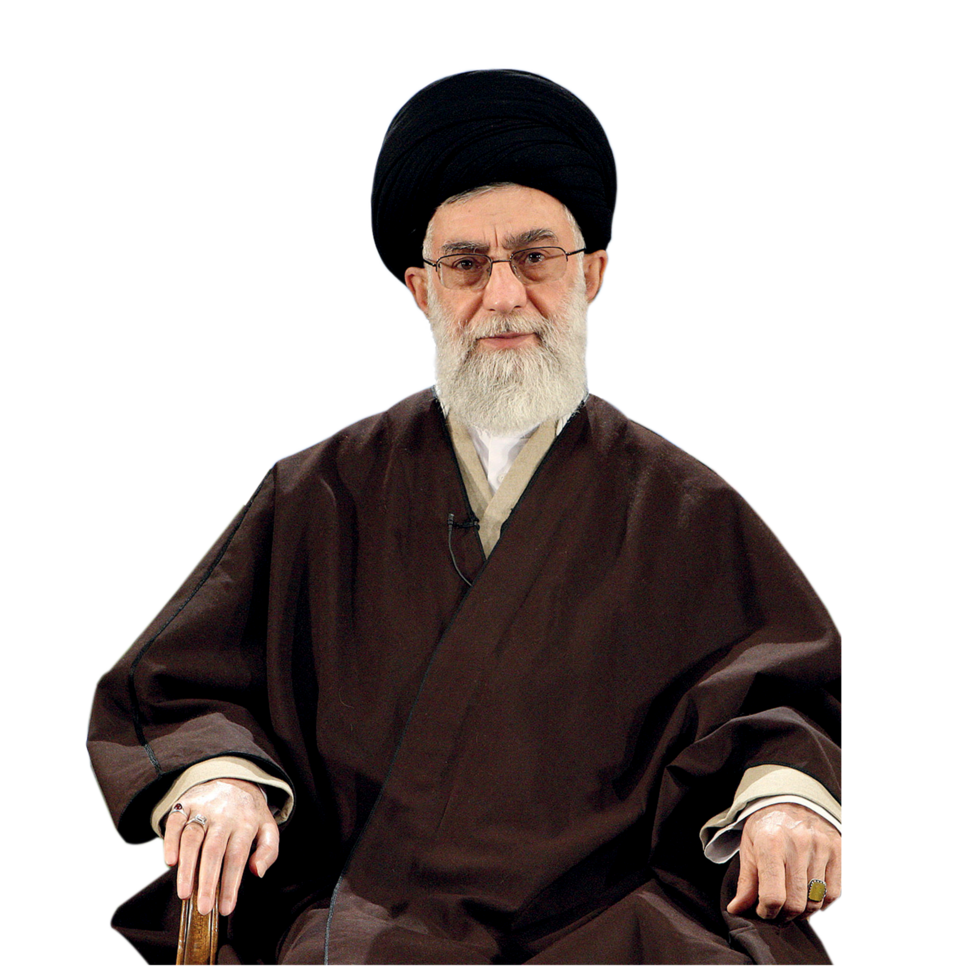Is Ayatollah Khomeini Still Living? Unraveling A Persistent Question
There's a question that, you know, sometimes pops up, especially when you think about major historical figures and the lasting impact they have. So, is Ayatollah Ruhollah Khomeini still living? It's a query that, quite frankly, can lead to a bit of confusion for many people, and it’s understandable why. When you consider the immense influence he had, shaping a whole nation, it makes sense that his name still comes up in conversations about Iran, even decades later. People might hear about the current leadership or see news about the country, and then, you know, wonder about the origins of it all, which naturally brings up the founder.
Actually, the position of Supreme Leader in Iran, which holds really massive powers, was created specifically by and for Ayatollah Ruhollah Khomeini himself. This role became the cornerstone of the 1979 Islamic Revolution, with him at its very heart. His leadership truly marked a significant turning point, changing the direction of Iran in ways that are still felt today, and that, is that, a lot of people are still trying to understand the full scope of that change.
However, the simple answer to whether Ayatollah Ruhollah Khomeini is still with us is no, he is not. This question, though, often gets intertwined with discussions about the current Supreme Leader, Ayatollah Ali Khamenei, whose health has, you know, been the subject of recent reports and public interest. It's almost as if the public's focus on the present leader's well-being makes some folks revisit the past, wondering about the first, iconic figure.
- How Tall Are Yung Gravys Feet
- Who Is Jeremy Robinson The Lawyer
- Are Michael Douglas And Danny Devito Friends
- Are Alina And Zahide Twins
- Who Is Martha Maccallum Married To
Table of Contents
- Who Was Ayatollah Ruhollah Khomeini? A Look at His Life and Legacy
- The Passing of a Revolutionary Leader: When Did Ayatollah Khomeini Die?
- From Khomeini to Khamenei: A Succession Story
- The Current Supreme Leader: Ayatollah Ali Khamenei
- Recent Reports on Khamenei's Health and Public Appearances
- Why the Confusion Lingers
- Frequently Asked Questions
- A Legacy That Endures
Who Was Ayatollah Ruhollah Khomeini? A Look at His Life and Legacy
Ayatollah Ruhollah Khomeini was, you know, a truly pivotal figure in modern Iranian history. He was the political priest who, in a way, managed to overthrow the world's most powerful reigning monarch back in 1979, ushering in what we now know as the Islamic Republic of Iran. His vision, while powerful, didn't quite achieve his full dream of either complete national unity or a worldwide Islamic revival, but his impact was, actually, undeniable.
He was the founder and, you know, the first Supreme Leader of the Islamic Republic, a role that was, as I was saying, essentially created for him. His leadership transformed the country's political and social fabric, and for many, he became a symbol of resistance and a new direction for the nation. This is, you know, why his name continues to resonate, even all these years later.
Personal Details and Biography of Ayatollah Ruhollah Khomeini
| Full Name | Ruhollah Musavi Khomeini |
| Born | 24 September 1902 |
| Died | 3 June 1989 |
| Age at Death | 89 years old |
| Cause of Death | Bleeding in the digestive system (after five heart attacks) |
| Role | Founder and First Supreme Leader of the Islamic Republic of Iran |
| Successor | Ayatollah Ali Khamenei |
The Passing of a Revolutionary Leader: When Did Ayatollah Khomeini Die?
So, to directly address the main question, Ayatollah Ruhollah Khomeini passed away on June 3, 1989. This event occurred, you know, at 22:20 IRST, which is Iran Standard Time, and it happened in Jamaran, a part of Greater Tehran. He was, actually, 89 years old at the time of his departure.
- Are Damian And Giannina Still Together
- Was Danny Devito In Home Alone
- Why Did Virginia And Devin Not Get Married
- What Does Jules Ari Do
- Do Devin And Virginia Get Married
The circumstances surrounding his death were, you know, quite serious. He had spent eleven days receiving care at a private hospital, which was, you know, near his residency. During that period, he experienced five heart attacks over a span of just ten days, which is, honestly, quite a lot for anyone. Sources from that time, you know, confirmed his age and listed the cause of his passing as bleeding in the digestive system.
Iranians, you know, have marked the anniversary of his departure every year. For instance, in one instance, they observed 31 years since Imam Khomeini's passing, with the current Leader of the Islamic Revolution, Ayatollah Seyyed Ali Khamenei, remarking that the founder of the Islamic Republic, you know, really shattered the myth of superpowers being invincible. It's a way, you know, of remembering his impact and what he stood for.
Even decades after his physical departure, Ayatollah Khamenei has, you know, expressed that Imam Khomeini "is still alive among us, and should remain so." This statement, you know, speaks to the enduring symbolic presence and influence of Khomeini's ideas and legacy within Iran, which is, you know, quite a powerful sentiment for many.
From Khomeini to Khamenei: A Succession Story
Following the passing of Ayatollah Ruhollah Khomeini in 1989, the leadership of Iran transitioned to Ayatollah Ali Khamenei. This was, you know, a very significant moment for the country, marking the end of one era and the beginning of another. Ali Khamenei has, in fact, served as Iran's second Supreme Leader ever since that year, taking over from the founder of the Islamic Republic, which is, you know, quite a responsibility.
Ayatollah Ali Khamenei, who was born on April 19, 1939, also played a really important part in the 1979 Iranian Revolution, just like Khomeini. He, you know, steadily rose through the clerical ranks, and before becoming Supreme Leader, he served as the country's president from 1981 to 1989. So, he was, actually, already a prominent figure in the government and revolutionary establishment.
There's a mural, you know, in the holy city of Qom that, in a way, really captures this succession visually. It shows Ayatollah Khomeini, the leader of the 1979 revolution, on one side, and then, you know, Ayatollah Ali Khamenei, who is the current Supreme Leader of Iran, on the other. This visual representation, you know, really emphasizes the continuity of leadership within the Islamic Republic.
The Current Supreme Leader: Ayatollah Ali Khamenei
Ayatollah Ali Khamenei, as we've talked about, is the current Supreme Leader of Iran, a position he's held since 1989. He's, you know, a very central figure in Iranian politics and religious life. You know, he's the one who ultimately guides the nation's policies and direction.
His role is, you know, immensely powerful, and his decisions carry a lot of weight. So, it's pretty understandable that, you know, people pay close attention to his public appearances and, you know, any news concerning his well-being. This is, you know, why recent reports about his health have garnered so much attention, both inside and outside Iran.
He's, you know, been at the helm for a considerable period, continuing the revolutionary path that Ayatollah Khomeini began. His leadership has seen Iran through many significant events and challenges on the global stage, which is, you know, quite a lot to manage.
Recent Reports on Khamenei's Health and Public Appearances
Recently, there have been, you know, quite a few discussions swirling around about the health of Ayatollah Ali Khamenei, who is, you know, 85 years old. Multiple social media posts, for instance, surfaced on a Saturday claiming that he was, you know, in a state of coma. These claims, you know, really started going viral on social media platforms, creating quite a stir.
The claims about his health, you know, came on the heels of a report by The New York Times earlier in October, which suggested that Ali Khamenei was, you know, seriously ill. However, it's worth noting that, you know, there hasn't been any official word from any sources about a further deterioration of the Ayatollah's health, which is, you know, an important detail to remember.
Hours after those reports suggested that Ayatollah Ali Khamenei was in a coma, Iran, you know, released a picture of the Supreme Leader. This was, you know, apparently a move to counter the rumors and show that he was, in fact, well. His X handle, for example, posted a photo taken during his meeting with the Iranian ambassador to Lebanon, Mojtaba Amani, on a Sunday, which was, you know, meant to reassure the public.
Officials have, you know, even said that Iran's Supreme Leader, Ayatollah Ali Khamenei, has been sheltering at a bunker and refraining from electronic communication. This measure was, you know, reportedly taken to prevent assassination attempts against him, which, you know, highlights the serious security concerns surrounding his position.
His last public appearance was, you know, on June 11, which was, you know, two days before hostilities with Israel broke out. During that appearance, he met with Iranian parliamentarians. The sudden absence after that was, you know, difficult to ignore for many observers. However, Ayatollah Ali Khamenei did speak in a televised message on June 18, following some Israeli strikes, which, you know, again, showed his continued presence.
Ali Khamenei is, you know, currently the talk of social media after a plethora of Israeli media outlets, you know, spread information that he's either reportedly dead or in a coma. This kind of speculation, you know, really fuels the confusion, especially when you consider the historical context of the leadership. You know, it's a very sensitive topic, and rumors can spread very quickly.
There were even, you know, whispers of a dead ayatollah's return echoing as Israeli drones swarmed over nuclear sites. This particular phrase, you know, seems to suggest a mix of the current leader's health rumors with, perhaps, some lingering public memory or even misinformation about Ayatollah Khomeini himself, contributing to the overall confusion about who is alive and who is not.
Why the Confusion Lingers
The question "Is Ayatollah Khomeini still living?" persists for a few reasons, you know. First, his historical significance is just so immense. He founded the Islamic Republic, and his image and ideas are, you know, still very much a part of public life in Iran. Murals, for example, often depict him alongside the current leader, which, you know, reinforces his enduring presence in the national consciousness.
Secondly, the current Supreme Leader, Ayatollah Ali Khamenei, has, you know, been in power for a very long time, since 1989. For younger generations, especially, there might be, you know, a blurring of lines between the two figures, given their shared title and the continuity of the system they both represent. This is, you know, a pretty common thing when historical figures are involved.
Also, the recent reports about Ayatollah Ali Khamenei's health, as we discussed, have, you know, really brought the topic of the Supreme Leader's mortality into the public discourse. When people hear about the current leader's health, it might, you know, subconsciously trigger thoughts about the previous leader, leading to a mix-up. It's, you know, a natural human tendency to associate.
And, you know, the way information spreads, especially on social media, can sometimes be a bit messy. Unverified reports and speculation can, you know, easily lead to misunderstandings, particularly about complex political and religious figures. So, it's, you know, important to look for reliable sources when trying to get the facts straight.
For instance, you know, the legacy of Ayatollah Ruhollah Khomeini is still debated 30 years after his death. For young Iranians, in particular, economic strife and conservatism, you know, sometimes taint the legacy of Ayatollah Ruhollah Khomeini and his revolution. This ongoing debate, you know, keeps his name in circulation, even if the specifics of his life and death aren't always clear to everyone.
Frequently Asked Questions
Did Ayatollah Khomeini really die in 1989?
Yes, Ayatollah Ruhollah Khomeini, the founder and first Supreme Leader of the Islamic Republic of Iran, passed away on June 3, 1989. He was, you know, 89 years old at the time of his death, which occurred in Jamaran, Greater Tehran, after a period of illness involving heart attacks and internal bleeding. This is, you know, a well-documented historical fact.
Who is the current Supreme Leader of Iran?
The current Supreme Leader of Iran is Ayatollah Ali Khamenei. He has, you know, served in this very powerful role since 1989, succeeding Ayatollah Ruhollah Khomeini. He was, actually, born in 1939 and played a significant part in the 1979 Iranian Revolution, also serving as president from 1981 to 1989, you know, before taking on the top leadership position.
Why are people in London marching for the Ayatollah?
The provided information mentions "Why are people in London marching for the ayatollah," which, you know, could refer to various reasons, possibly related to support for the current Iranian leadership or, perhaps, the enduring legacy of Ayatollah Ruhollah Khomeini and the principles of the Islamic Revolution. It's, you know, often a reflection of complex political and social sentiments among diaspora communities.
A Legacy That Endures
So, while the answer to "Is Ayatollah Khomeini still living?" is a clear no, his presence, you know, continues to be felt in Iran and beyond. His passing in 1989 marked a significant moment, leading to the succession of Ayatollah Ali Khamenei, who has, you know, now led the country for decades. The ongoing discussions about the current Supreme Leader's health, as we've seen, sometimes, you know, inadvertently bring up questions about his predecessor.
The confusion surrounding these two powerful figures, you know, really highlights how deeply intertwined history and current events can be, especially in a nation with such a rich and complex past. Understanding the distinct roles and timelines of both Ayatollah Ruhollah Khomeini and Ayatollah Ali Khamenei is, you know, pretty essential for anyone trying to grasp the dynamics of modern Iran. You can learn more about Iranian history and politics on our site, and also, you know, link to this page for a detailed timeline of Iranian leaders.
For more historical context on leaders and their impact, you know, you might find it interesting to look at other historical figures who have shaped nations. Just as a thought, you could explore resources like the Encyclopaedia Britannica's entry on Ruhollah Khomeini, which, you know, offers a broader perspective on his life and influence. It's, you know, always good to get a full picture.
- Are Mason And Meg Still Together
- Why Did Mia Fey Become A Lawyer
- How Many Movies Have Michael Douglas And Danny Devito Been In Together
- Who Did Shannon Bream Replace On Fox News Sunday
- Who Is Sandra Browns Husband

Ayatollah Ali Khamenei Supreme Le 2024 Tickets - Codie Devonne

Khamenei: 'No one can stop resistance forces' if Israel continues

Portrait of Ayatollah Syed Ali Khamenei. Iran's supreme leader